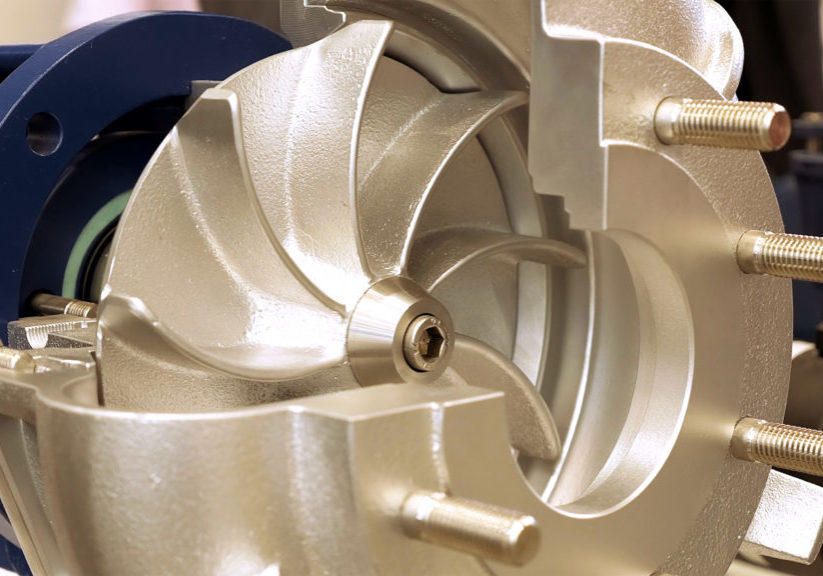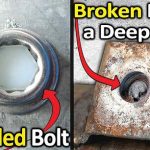Because most of the pumps on board ship are centrifugal pumps, we will examine the symptoms and common causes of centrifugal pump problems here.
Centrifugal pumps work, as the name suggests, on the centrifugal forces acting on the liquid being pumped.

The centrifugal force is imparted to the liquid through the high-speed rotation of a specially shaped impeller.
Whenever we find a centrifugal pump not performing well, the causes can usually be traced back to 3 common reasons:
● Suction related problem
● System related problem
● Mechanical related problem
Now you can easily pinpoint the trouble. Download free DiagnoPump, the pump troubleshooter software.

Suction Related Problem
The liquid inside the impeller must behave like a solid column in order for the centrifugal pump to work. More liquid must replace whatever liquid forced out by centrifugal force. If the solid column of liquid is broken, by the presence of air, the pumping effect is reduced or broken, and the pump does not perform properly. Some of the common suction related faults are:
● Pump not primed
● Pump suction pipe not completely filled with liquid
● Suction lift too high
● Insufficient margin between suction pressure and vapor pressure
● Excessive amount of air or gas in the liquid
● Air pockets in the suction line
● Air leaks into the suction line
● Air leaks into the pump through the stuffing box or gland
● Foot valve too small
● Foot valve partially clogged
● Inlet of suction pipe insufficiently submerged
● Water seal pipe plugged
● Seal cage improperly located in stuffing box, preventing sealing fluid entering space to form a seal
System Related Problem
Most of the system related problems occur because of design flaw. For example, the designer may have chosen the wrong pump whose characteristic does not match the system requirement. For the Marine Engineer working on board ship, these problems are rare. Perhaps sometimes, when replacing motors, and starting up. Below are some of the common reasons:
● Speed too low
● Speed too high
● Wrong direction of rotation
● The total head of system higher than design pump head
● The total head of system lower than design pump head
● Specific gravity of liquid different from design
● Viscosity of liquid differs from that for which the pump was designed
● Operation at very low capacity
● Parallel operation of pumps unsuitable for such operation
Mechanical Related Problem
This group of problems is most often encountered on board ship. The effects of mechanical related problems could manifest themselves as suction related problems, like air leaks in the system, worn out impellers, and mouth rings, but the most common occurrence is the presence of vibration and abnormal noise in the equipment.
All equipment on board ship, including centrifugal pumps will encounter mechanical related problems. The practice of good maintenance, and vigilant watchkeeping will lessen the damage to the equipment. Some of the common mechanical related problems are:
● Foreign matter in the impeller
● Misalignment
● Foundations not rigid
● Shaft bent
● Rotating part rubbing on stationary part
● Bearing worn
● Wearing rings worn
● Impeller damaged
● Casing gasket defective, permitting internal leakage
● Shaft or shaft sleeves worn or scored at the packing
● Packing improperly installed
● Incorrect type of packing for operating conditions
● Shaft running off-center because of worn bearings or misalignment
● Rotor out of balance, resulting in vibration
● Gland too tight, resulting in no flow of liquid to lubricate the packing
● Failure to provide cooling liquid to water-cooled stuffing boxes
● Excessive clearance at bottom of stuffing box between shaft and casing, causing packing to be forced into pump interior
● Dirt or grit in sealing liquid, leading to scoring of shaft or shaft sleeve
● Excessive thrust caused by a mechanical failure inside the pump or by the failure of the hydraulic balancing device, if any.
● Excessive grease or oil in anti-friction bearing housing or lack of cooling, causing excessive bearing temperature
● Lack of lubrication
● Improper installation of anti-friction bearings
● Dirt getting into bearings
● Rusting of bearings due to water getting into housing
● Excessive cooling of water cooled bearing, resulting in condensation of moisture from the atmosphere in the bearing housing


